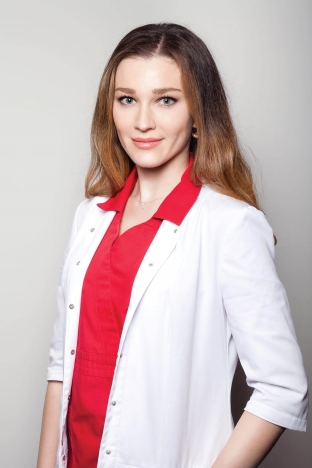Rejuvenation is one of the main directions in modern aesthetic medicine. Every day, a huge number of patients come to dermatocosmetologists with complaints of age-related changes in the face and body, and the main task of specialists is to select the optimal correction scheme for each individual patient.
 In an exclusive interview for estet-portal.com, dermatologist, cosmetologist, head physician of the Total Charm Tbilisi clinic Albina Kajaya spoke about the peculiarities of working with aged patients and the most effective anti-aging procedures. What techniques should be combined to achieve the best effect – read now.
In an exclusive interview for estet-portal.com, dermatologist, cosmetologist, head physician of the Total Charm Tbilisi clinic Albina Kajaya spoke about the peculiarities of working with aged patients and the most effective anti-aging procedures. What techniques should be combined to achieve the best effect – read now.
Which patients do you work with the most?
I work in the field of rejuvenation. As a rule, these are patients 35-40 and 60 plus. My oldest patient – a man who is 75 years old. Nobody wants to grow old, especially when your soul is young and beautiful, as in 25-30 years old.
It is much easier to work with young patients who are under 40 years old, it is easier for them to choose a set of procedures.
But patients 60 plus, as a rule, confuse dermatocosmetologists.
What is the main difficulty in working with older patients?
The difficulty is that when working with older patients, you don't know where to start. For example, you start with the correction of mimic wrinkles, and you understand, regardless of whether the patient’s muscle is turned off or not, the wrinkles remain the same. And, therefore, by trial method, I selected the optimal algorithm for working with precisely such age patients.
What kind of techniques do you combine for the best effect when working with aged patients?
Based on my practical experience, I came to the conclusion that rejuvenation should occur in stages.
First stage – this is redermalization. Without work on the structure and quality of the skin, it is simply impossible to achieve the maximum lifting effect. Redermalization is achieved through the action of preparations based on hyaluronic acid and peptides.
The second stage is the correction of mimic wrinkles. Only after working on the skin, I proceed to the correction of mimic wrinkles and platysma (if indicated) with the help of botulinum toxin.
The third stage is work on the quality of subcutaneous fat. Of particular importance are the nasolabial, medial, central, and mandibular facial compartments. After all, ptosis occurs due to the displacement of these compartments vertically, from the lateral to the medial sections.
With age, tissues atrophy and shift, as a rule, the worse the condition of the subcutaneous fat, the worse the threads are attached and the filler is fixed.
Well, the last stage is the thread correction. In my practice, I use Aptos, the long history of this method proves the effectiveness and long-term clinical results. Only threads with notches can move soft tissues and fix them. There are two types of Aptos threads: non-absorbable polypropylene threads and biodegradable polylactic acid threads. The latter type, in addition to the lifting effect, additionally works as a biorevitalizant of prolonged action.
Aptos threads feature is that for each zone and problem, Aptos offers a specific product and several methods.
This possibility allows the doctor and the patient to choose an individual approach to solving the problems of soft tissue ptosis.
Working on all layers of the face in a complex way, we will get a decent result that will allow us to delay surgery for several years.
How effective are minimally invasive techniques in working with older patients?
Some 5-6 years ago, plastic surgeons were skeptical about us, dermatologists-cosmetologists, and non-surgical methods. Today, injection and thread methods are actively included in the daily practice of plastic surgeons.
In your opinion, how important is it for plastic surgeons to work together with cosmetologists to achieve the best results?
My husband Giorgi Sulamanidze is a plastic surgeon, and we work exclusively in tandem with him. He is well aware that, in order to achieve the best result, he must work with me, because he knows his work well, but there are times when my help is simply needed. For example, when it is necessary to prepare the patient before surgery or reduce the rehabilitation period after. There are times when minor correction with injections is required, especially after invasive procedures. And, on the contrary, when I see, for example, that we have already worked out a heavy chin, and there is no effect from injections of lipolytics, I understand that we will not achieve a good effect here without liposuction.







Add a comment